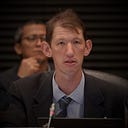Regulator highlights a transition risk facing insurers that may be more acute for takaful operators
- European insurance regulator EIOPA has found significant transition risk exposure in the reported investment holdings of the insurers it oversees
- Due to more limited scale, fewer Shariah-compliant fixed income markets and greater exposure to transition-risk economies, takaful operators may face heightened risk
- RFI Foundation’s research illustrates an example of the transition risk facing takaful operators that could be mitigated if the opportunity set of green & sustainable sukuk was larger
Insurers have been at the forefront of many changes relating to climate change because they face the brunt of the risks relating to increasing frequency and severity of storms. The European Insurance and Occupational Pensions Authority, or EIOPA, has expanded the climate risk sensitivity knowledge base with a new report estimating the financial exposure that insurers have to climate change through their investment portfolios.
Many insurers face the most significant losses from climate transition through their equity investments in the oil & gas, auto manufacturing and coal sectors. In total, these risks could account for 4–5% of the reported excess of assets over liabilities. Some of the risks could be offset by investments made in companies that are enabling the transition such as renewable energy companies.
One take-away from the report is to extrapolate the data — which are based on high-quality data gathered from regulatory reports made under Solvency II — to the impact that climate change might have on other financial institutions. For example, takaful operators based in key Islamic finance markets could face more severe exposure to investment risks related to climate change than do European insurers.
Shariah screens emphasizing prudence and requiring lower leverage may reduce their exposure to some risky investments. However, a more limited universe of investments, particularly on the fixed income side, could reduce diversification, especially since the green and sustainable sukuk are more limited than in the conventional bond market.
Within the fixed income sector, the risks from more limited diversification options are heightened by the geographical breakdown of most issuers. As EIOPA noted:
“Another source of transition risks may arise through holdings of governments bonds. For these bonds, the climate-related transition risks would relate to the carbon intensity of the economy as a whole, i.e. how dependent is government revenue on the (taxation of, or share in) profits generated in carbon-intensive industries such as car manufacture, heavy industry (especially cement), fossil fuel production (and energy generation) and/or export of those fuels.”
Takaful operators by and large are invested primarily within their home markets, which limits the diversification options in relation to these transition risks. In November, RFI released a report highlighting the largest sectoral concentrations of transition risk in Malaysia. Within the debt capital markets where takaful operators hold most of their assets, electricity generation and transportation were the primary sources of transition risk.
Without a full analysis of the investment holdings of specific takaful operators, it’s not possible to precisely quantify the likely risks. However, the approximate price sensitivity reflected in the less severe scenario considered provides ample basis for concern about the risks they might face in their current investments.
It also highlights how they could mitigate some of their transition risks through investments in climate mitigating sectors, especially if their exposure to climate-sensitive sectors is just a portion of their investments. Our analysis found that about 10% of debt capital market assets were in the most transition risk-exposed sectors, while most of the remaining 90% had indirect exposure to transition risk through their reliance on electricity, waste management and transportation services.
Therefore, adding investments in sectors that benefit the low-carbon transition, such as renewable energy or electric vehicles and alternative mobility including mass transit, can provide diversification against transition risk. Going a step further and shifting a portion of transition risk-exposed investment holdings, for example, would reduce the transition needed to generate diversification against transition risks. It would also offer a way for a takaful operator to signal its interest in responsible finance and the alignment of its investments with the stewardship obligations connected to its identity as an Islamic financial institution.
The development of responsible finance doesn’t have to be a distraction from business; we’ve seen many steps forward despite the challenges of 2020 where it is integrated into the Islamic finance business model. As regulatory attention becomes more of a concern, especially around climate-related issues, Islamic financial institutions should enter 2021 committing to responsible finance first and foremost because it is critical for future business success, but also because it strengthens the unique ethical value proposition of Islamic finance.
Want to learn more about how RFI Foundation can help you identify your biggest opportunities in responsible finance? Contact us for more information through our Membership Page or by email at info@rfi-foundation.org.
Republished from the RFI Foundation’s weekly newsletter. Subscribe for free here!
